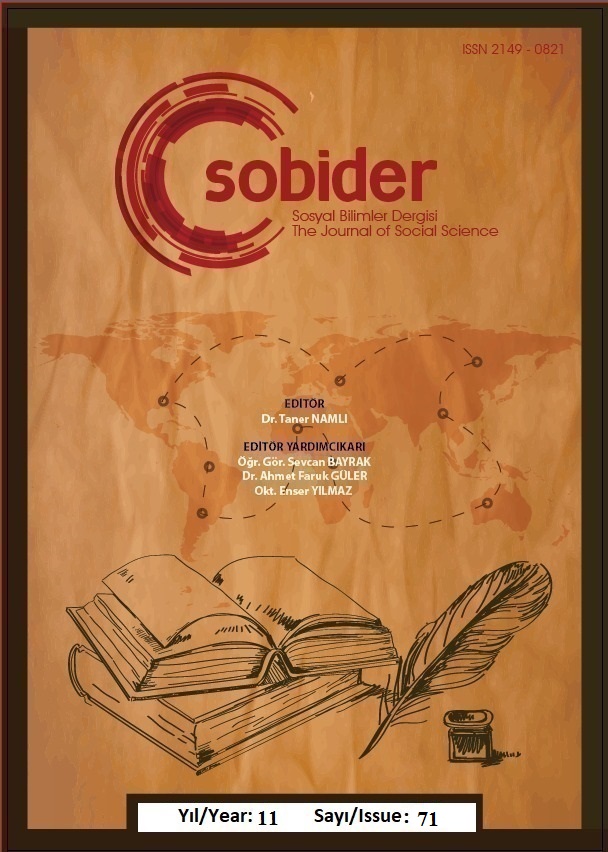Author :
Abstract
Mevlevîlik ile gönül bağı olan kişilerin çoğu, Türk İslâm sanatları içinde çok önemli bir yere sahip olan hat sanatına gönül verip hizmet eden kişilerdi. Temel sebeplerinden, biri bu tarikatın sanata daha özel bir önem vermesidir ve bu nedenle dervişler arasından en çok sanatkârın çıktığı tasavvufî kurum Mevlevîliktir, diyebiliriz. Bu nedenle, “Yâ Hazret-i Mevlâna” istifli hat levhası olamayan hattat yok gibidir. Bu levhalar ise daha ziyade destarlı sikke formu gibi belirli istif şekilleriyle yazılmıştır. Söz konusu formlar zengin kültürel anlamlar içermektedir. Örnek olarak “yâ” ve “nâ” harfleri uzatılarak sikke şeklinde yazıldığında, aynı zamanda kubbeye benzemekte; kubbe ise, Hz. Mevlâna’nın bir ayağı dinde sabitken diğer ayağıyla tüm cihanı dolaştığını ifade eden düşüncesiyle örtüşmektedir.Bu çalışmada, muhtelif hat eserlerinde ve koleksiyonlardaki Hz. Mevlâna istifli hat levhalarını, estetik ve teknik yönleriyle incelemeye çalıştık.
Keywords
Abstract
Most of the people who had a heartfelt ties to the Mevlevi order were people who devoted themselves to the art of calligraphy, which had a very important place in the Turkish-Islamic arts. One of the main reasons is that this sect gives more special importance to art, and for this reason, we can say that the most sufistic institution from which the most artisans came from among the dervishes is Mevlevism. For this reason, there is hardly any calligrapher who does not have a calligraphy plate with a stack of "Ya Hazrat Mevlana". These plates, on the other hand, were inscribed with certain stacking shapes, such as the destard coin form. These forms contain rich cultural meanings. For example, when the letters “yâ” and “nâ” are elongated and written as coins, it also resembles a dome; the dome, It coincides with Mevlâna's thought that while one foot is fixed in religion, he travels the whole world with the other foot.In this study, in various calligraphy works and collections, Hz. We tried to examine the Mevlana stacked line plates with their aesthetic and technical aspects.





